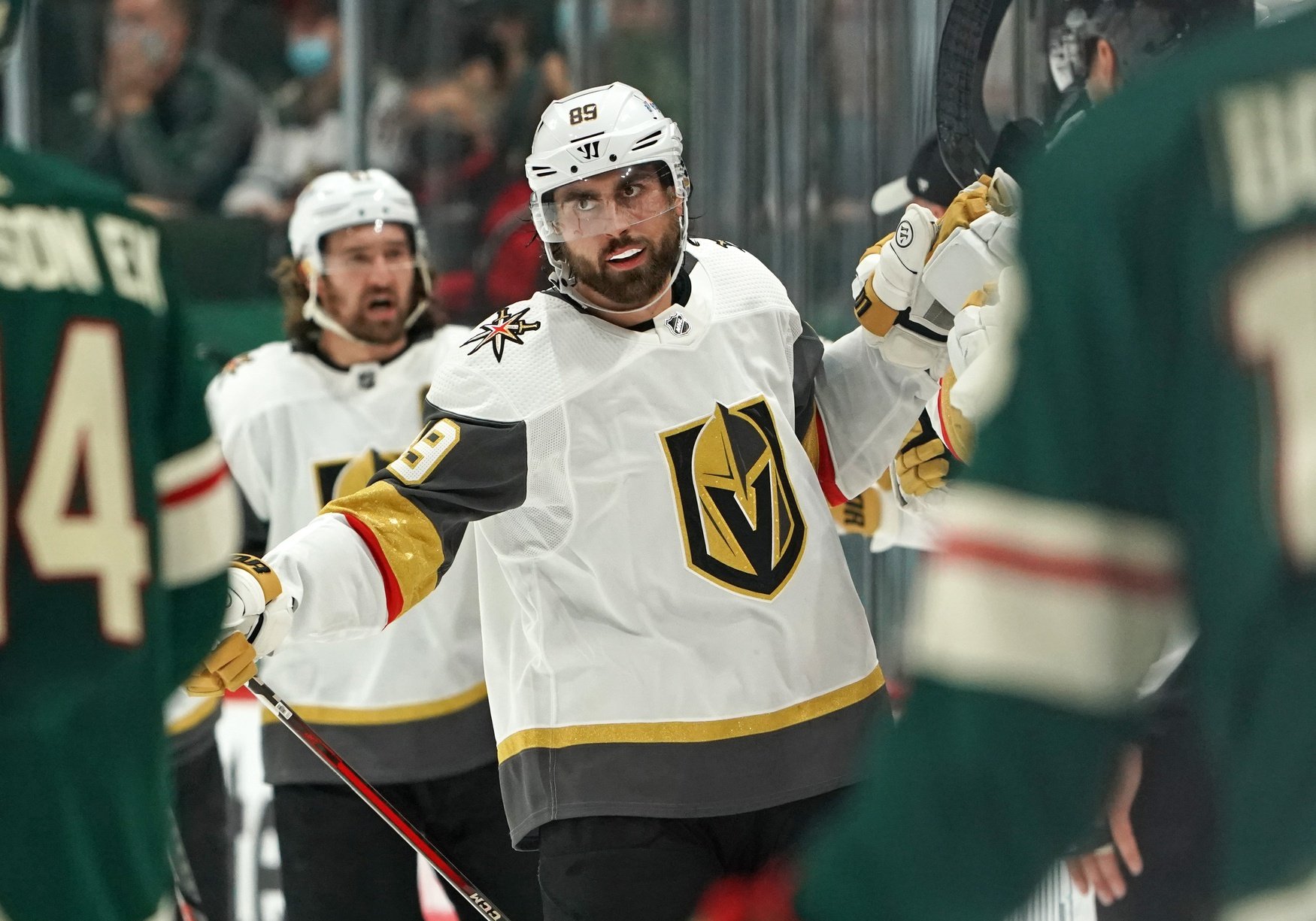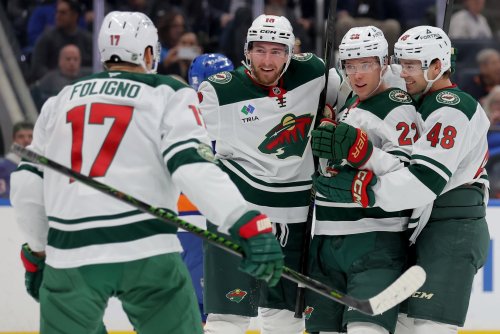
We at 10K Rinks know that no one needs to remind you that the Vegas Expansion Draft was a disaster. Sadly, Minnesota law still requires us to inform you that the Wild traded away Alex Tuch. We’re also legally compelled to say, yes, we’re talking about the same Tuch who helped eliminate the Minnesota Wild this postseason.
In addition to his beloved core of early 2010s draftees never truly contending, plus failing to get Kirill Kaprizov stateside, that move was a top-three reason why former general manager Chuck Fletcher was fired in 2018. It’s a blunder that many have ridiculed, including the team’s owner.
While the move definitely blew up in his face and remains a cautionary tale for the Wild with the Seattle Expansion Draft looming, one has to feel a bit of sympathy for Fletcher. Hindsight diminishes just how difficult a spot he was in at the time.
Any member of the twentysomething core Fletcher would expose — be it Jonas Brodin, Charlie Coyle, Matt Dumba, Mikael Granlund, Nino Niederreiter, or Jason Zucker — was worth over three points in the standings in 2016-17. Fletcher already had to shed payroll that offseason; losing three points on top of that proved too tough to stomach.
To this day, Fletcher botching the Vegas expansion has nothing to do with him making a deal. He was right to protect the value on his roster. His sin was badly misevaluating Tuch rather than bribing Vegas with Luke Kunin or Jordan Greenway.
In short, the lesson shouldn’t be against making a move. It should about making sure the move made is the right move.
This appears to be the lesson that Guerin is taking with him. Does this mean it’s good that he’s suddenly signaling an openness to making a deal with the Seattle Kraken?
It’s possible if Guerin is somehow able to resolve a major salary cap issue like moving Zach Parise. Otherwise, it’s probably wise to protect who he can and let Seattle make their choice.
This isn’t the situation Minnesota was in three years ago. Minnesota was a Stanley Cup contender before being shocked by the St. Louis Blues in the first round. Now they’re a team on the rise, but one that requires more work to become serious contenders.
Back then, Minnesota had many higher-end (though not star) players who they risked exposing. That’s simply not the case now. Every important forward — Kaprizov, Joel Eriksson Ek, Kevin Fiala, and, to a lesser extent, Marcus Foligno and Greenway — can be protected. Guerin even has the luxury of picking between the likes of Nico Sturm and Ryan Hartman for that final protection slot. There are no squeeze points there. The worst they can do is lose a bottom-six forward.
Even on defense, the worst-case scenario — losing Dumba to Seattle — isn’t quite the apocalyptic event it would’ve been last time. Matt Dumba had untapped star potential within him the last time expansion came around. Fletcher was right about this, as Dumba immediately posted a 50-point season, then followed it up with 12 goals in 32 games before a freak pectoral injury derailed his season.
Since then, he’s posted 12 goals in 120 games. It’s absolutely possible that Dumba could reassert himself as one of the league’s best-scoring defensemen three years removed from his injury. It’s also possible that his injuries wrecked the prime years of his career, robbing him of an ascent to stardom. No one could blame a GM for rolling the dice with Dumba, a hard worker with standout character. Still, it looks far from a sure bet this time around.
Another key difference between the Dumba Dilemma version 1.0 and 2.0 — he wasn’t just a great defenseman last time. He was irreplaceable. That’s not metaphorical. They legitimately did not have any sort of internal replacement for him -- no prospects on the way, no one killing it in the AHL, nothing.
This time around, Minnesota theoretically has two young prospects that can backfill the right side of the blueline. Brennan Menell followed up a first-team All-AHL nomination in 2019-20 with 38 points in 47 KHL games. Calen Addison looked very poised in his cup of coffee in the NHL, posting 22 points in 31 games as a 20-year-old in Iowa. If he’s not ready now, he will be soon.
By all means, if Ryan Suter will waive his no-move clause, the Wild should protect Dumba. But is it worth spending a premium asset to protect him this time around? No.
This especially applies to the goalies on this team. It’s understandable if the Wild want to protect their newfound stability in net. Going back to the days of an aging Devan Dubnyk roaming the crease isn’t an option. But Minnesota doesn’t need to do anything to protect their situation in net.
It might be hard to remember, given that fall 2020 feels like it was five years ago, but Guerin almost got Cam Talbot off the scrap heap. Talbot had redeemed himself with the Calgary Flames after a disastrous season with the Edmonton Oilers but still couldn’t command more than $3 million per year. If Minnesota could identify one free agent who could play behind Minnesota’s stout defense, they would surely do it again if they could lose Talbot via expansion.
But hey, if they’re really worried about losing a 34-year-old goalie, they can simply protect Talbot. Making your bed with an aging goalie is risky, but Talbot’s performance was good enough to justify it. His play was worth 4.2 standings points last season, which ranked 16th in the NHL.
Of course, protecting Talbot means exposing soon-to-be 25-year-old goalie Kaapo Kahkonen to Seattle. But is that really that terrible?
Kahkonen no doubt had some highlights in his rookie season, including a nine-game winning streak where he posted a .947 save percentage. Under normal circumstances, Kahkonen is absolutely someone you keep around and see if there’s more to be had there. But in these circumstances, where it’ll cost an asset to protect him? That’s a tougher ask.
Kahkonen had the same great defense in front of him as Talbot, so it’s concerning that the backup put up significantly worse numbers. Kahkonen’s goals saved above expected was -15.6, which was fourth-worst in the entire NHL. It was a performance that cost Minnesota over three points in the standings.
It stems back to a problem running throughout his North American career: He’s streaky. He’ll run off incredible hot streaks, but when he gets cold, he can’t get a save. Unless that changes, the scouts that have pegged him as having backup upside appear correct.
And if Kahkonen’s destiny is really that of a backup goalie, why spend even a second-round pick protecting him? Is it a nightmare scenario if Minnesota loses Kahkonen and has to find a backup who can hold the fort while Hunter Jones develops?
The last time expansion happened, Fletcher got too attached to his players while undervaluing a future asset. He got burned. Guerin has been highly disciplined with protecting future assets; he has to preserve draft capital to either trade for a center or rebuild the farm system after that trade; and he has much, much less to lose than Fletcher did four years ago. It’d be a shame to see Guerin repeat those mistakes under much less dire circumstances.
Think you could write a story like this? Hockey Wilderness wants you to develop your voice, find an audience, and we'll pay you to do it. Just fill out this form.






Recommended Comments
Join the conversation
You can post now and register later. If you have an account, sign in now to post with your account.
Note: Your post will require moderator approval before it will be visible.